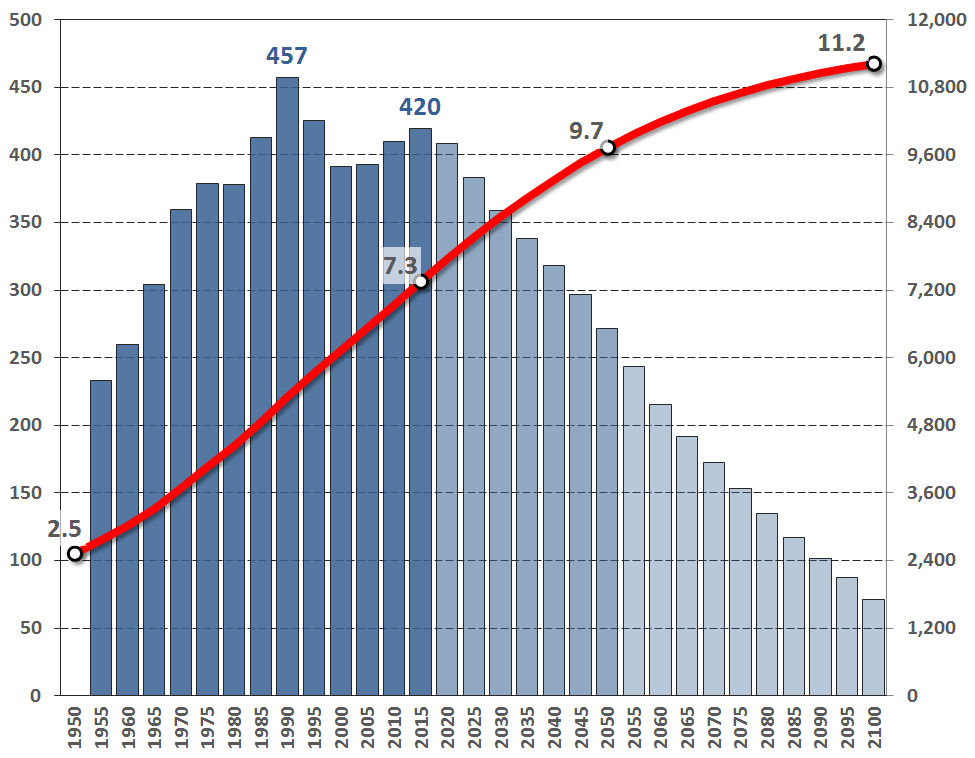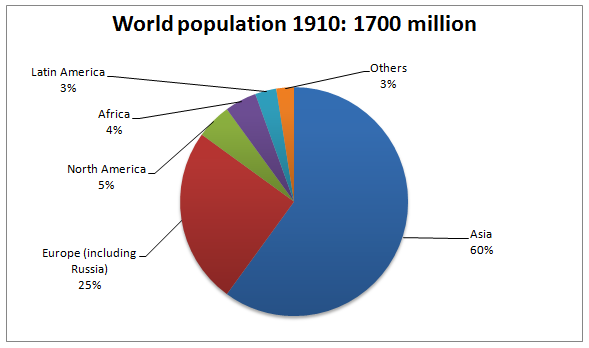

The largest reductions in the level of total fertility are projected to occur in sub- Saharan Africa. Globally, the level of fertility is expected to fall from an average of 2.5 live births per woman in 2019 to 2.2 in 2050 and to 1.9 in 2100, according to the medium-variant projection. In 2019, fertility remains above this level, on average, in sub-Saharan Africa (4.6), Oceania (3.4), Northern Africa and Western Asia (2.9), and Central and Southern Asia (2.4). Today, close to half of the global population lives in a country or area where lifetime fertility is below 2.1 births per woman (roughly the level required for populations with low mortality to have a growth rate of zero in the long run). The average number of live births per women over a lifetime has fallen markedly in many regions over the past several decades. Total fertility (births per woman) by SDG region, estimates, 1950 to 2020, and medium-variant projections, 2020-2100 The rates have been decreasing year on year since 2013. In 2019, the total fertility rate in England and Wales fell to 1.65 children per woman, a 2.9% decrease from 2018. Today, nearly half of the global population lives in a region where lifetime fertility sits below 2.1 births per woman – the natural replacement level. Globally, the level of fertility is projected to decrease from an average of 2.5 live births per woman in 2019 to 2.2 in 2050 and to 1.9 in 2100. Decreasing total global fertility, falling below natural replacement levels Overview of the UK population: January 2021, Office for National Statistics.Ģ.World Population Prospects 2019: Data Booklet.Although the most likely scenario is that the world’s population will continue to grow throughout the present century, there is an estimated 27% probability that it could stabilise or even begin to shrink sometime before 2100. Thus, uncertainty about the size of the world’s population in 20 is relatively small but increases rapidly for projections extending into the second half of the century. The results indicate that the global population is likely (95%) to number between 8.5 and 8.6 billion in 2030, between 9.4 and 10.1 billion in 2050, and between 9.4 and 12.7 billion in 2100.

The uncertainty of these projections is expressed using prediction intervals around the medium variant: shaded in orange for 80% intervals and yellow for 95% intervals.

The bold red curve shows the medium-variant projections for the period 2020 to 2100. The bold blue curve refers to estimates for the period 1950 to 2020.


 0 kommentar(er)
0 kommentar(er)
